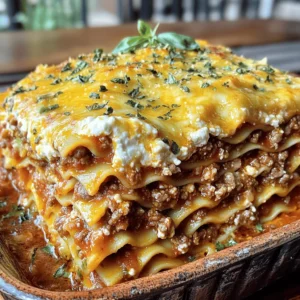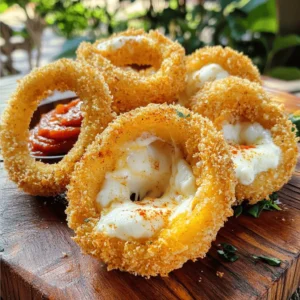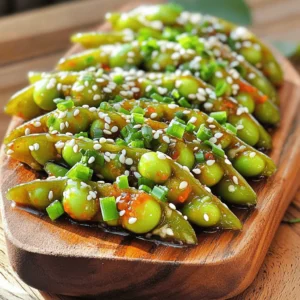- Cheesy Beef & Potato Burritos with Nacho Drizzle Delight
- Cherry Chocolate Chewy Cookies Delightfully Simple Recipe
- Egg & Ham Breakfast Sandwich with Melty Cheddar Delight
- Easy Chicken Enchiladas Quick and Flavorful Recipe
- Garlic Butter Shrimp Scampi Tasty Dinner Recipe
- Tex Mex Quinoa Salad Flavorful and Fresh Delight
- No-Bake Peanut Butter Bars Quick and Easy Recipe
- Vegan Lentil Curry Simple and Flavorful Dish
- Easy Broccoli Cheddar Soup Simple and Comforting Meal
- One Pan Lemon Herb Chicken Flavorful and Easy Meal
- Honey Mustard Grilled Chicken Savory and Simple Meal
- Chicken Gyro with Tzatziki Easy Meal Recipe Guide
- Fresh Mango Avocado Salsa Flavorful and Simple Mix
- Spicy Tuna Sushi Bowl Flavorful and Easy Recipe
- No-Bake Peanut Butter Bars Easy & Delicious Treat
- Pink M&M Snickers Cheesecake Delightful and Easy Treat
- Hawaiian Chicken Sheet Pan Flavorful and Easy Recipe
- Shrimp Grilled Gourmet Cheese Irresistible Sandwich
- Cheesy Stuffed Italian Bread Savory and Simple Recipe
- Greggs Inspired Steak Bakes Savory and Simple Recipe
- Stuffed Crust Pepperoni Pizza Perfect for Family Nights
- Best Grilled Cheese Burrito Savory and Crispy Delight
- Spicy Sriracha Honey Wings Flavorful and Easy Recipe
- Chocolate Dipped Strawberry Popsicles Simple Summer Treat
- Rainbow Veggie Spring Rolls Tasty and Simple Delight
- Chocolate Chip Banana Bread Simple and Delicious Recipe
- Easy Shrimp Scampi Quick and Flavorful Meal
- Sun-Dried Tomato Pesto Pasta Delightful and Easy Meal
- Cheesy Taco Potatoes Flavorful and Satisfying Meal
- Smashing Patty Melts with Signature Sauce Delight
- Loose Meat Tavern Sandwich Flavorful and Easy Recipe
- Beef Enchiladas with Red Sauce Flavorful Family Meal
- Street Corn Chicken Bowl Savory and Satisfying Meal
- Strawberry Shortcake Cheesecake Rolls Delicious Treat
- Homemade Classic Lasagna Flavorful Comfort Dish
- Blueberry Brie Grilled Cheese Delightful and Simple Dish
- Cotton Candy Cheesecake Delightful and Fun Recipe
- Cheesy Chicken Garlic Wraps Delicious and Simple Meal
- Cheesy Mozzarella Onion Rings Crispy and Flavorful Treat
- Sweet Chili Edamame Tasty and Healthy Snack Idea
- Chili Lime Grilled Chicken Skewers Flavorful Delight
- Crispy Buffalo Cauliflower Tacos Simple and Tasty Meal


![- 1 cup unsalted butter, softened - 1 cup brown sugar, packed - 1/2 cup granulated sugar - 2 large eggs - 1 teaspoon vanilla extract - 2 1/2 cups all-purpose flour - 1 teaspoon baking soda - 1/2 teaspoon salt - 1 cup dark chocolate chips - 1 cup dried cherries, roughly chopped - 1/2 cup chopped walnuts (optional) To make these cookies, you need a few key items. I recommend using unsalted butter for a balanced flavor. Brown sugar gives cookies a lovely chew. The granulated sugar adds sweetness. Two eggs bind everything together and help with rise. Flour is your base, and baking soda helps the cookies rise and stay soft. Salt enhances all the flavors. Dark chocolate chips provide a rich taste. Dried cherries add a sweet and tart burst. If you like nuts, walnuts add a nice crunch. - Different types of chocolate (milk, white) - Flavor extract variations (almond, orange) - Additional nuts or seeds You can switch up the chocolate if you want. Milk or white chocolate can make the cookies sweeter. Also, try adding a splash of almond or orange extract. This gives a unique twist. You can also add other nuts or seeds for extra texture. - Mixing bowls - Baking sheets - Parchment paper - Cookie scoop or tablespoon Having the right tools is key. Mixing bowls help you combine ingredients easily. Baking sheets hold the cookies while they bake. Parchment paper keeps them from sticking. A cookie scoop or tablespoon makes it simple to shape the dough. With these ingredients and tools ready, you’re set to make cherry chocolate chewy cookies that are sure to impress! For the full recipe, check out the [Full Recipe]. - Preheat oven to 350°F (175°C) - Line baking sheets with parchment paper Start by preheating your oven. This step ensures even baking. While it warms up, grab your baking sheets and line them with parchment paper. This helps the cookies not stick and makes cleanup easy. - Cream together butter, brown sugar, granulated sugar - Add eggs one at a time and mix well - Stir in the vanilla extract In a big bowl, cream the softened butter, brown sugar, and granulated sugar. Mix until it’s light and fluffy. Next, add the eggs, one egg at a time. Be sure to mix well after each egg. This helps the batter become smooth. Finally, stir in the vanilla extract for an extra kick of flavor. - Whisk flour, baking soda, and salt - Gradually add to the wet mixture In another bowl, whisk together the flour, baking soda, and salt. This step is key for even distribution. Gradually add this mix to the wet ingredients. Stir until just combined. You don’t want to overmix, as this can make your cookies tough. - Fold in dark chocolate chips, dried cherries, and walnuts - Drop rounded balls onto the baking sheet Now, fold in the dark chocolate chips, dried cherries, and walnuts if you’re using them. This adds a great texture and flavor. Using a cookie scoop or tablespoon, drop rounded balls of dough onto the prepared baking sheet. Make sure to leave space between each ball to allow for spreading. - Bake for 10-12 minutes until lightly golden - Cool on the baking sheet for 5 minutes before transferring to a wire rack Pop the baking sheet in the oven. Bake for 10-12 minutes until the edges are lightly golden. The centers may look soft but will firm up as they cool. After baking, let the cookies cool on the baking sheet for 5 minutes. Then, transfer them to a wire rack to cool completely. This helps keep them chewy and delicious. Enjoy your Cherry Chocolate Chewy Cookies! For the complete details, check the Full Recipe. To get that perfect chewy texture, start with your butter. It should be soft but not melted. If your butter is too hard, your cookies may end up dry. Leave it out at room temperature for about 30 minutes before you begin. This helps mix it well with the sugars. Next, do not overmix your dough. Once you add the dry ingredients, mix until just combined. Overmixing can lead to tough cookies. Remember, a little flour showing is okay! Using an oven thermometer is key for great results. Ovens can be off by a lot. An accurate temperature helps your cookies bake evenly. If your oven runs hot or cold, adjust the time or temperature accordingly. Place your baking sheet on the middle rack of the oven. This ensures even heat all around the cookies. It helps them rise nicely and bake without burning on the bottom. For a fun touch, arrange your cookies on a colorful plate. This makes them pop and look more inviting. You can sprinkle a few extra cherries and chocolate chips on top. It adds a nice look and hints at the yummy flavors inside. Enjoying them with a glass of cold milk makes it even better! For the full recipe, check out the detailed instructions above. {{image_2}} You can easily change the flavor of your cherry chocolate chewy cookies. Here are two fun ideas: - Almond cherry chocolate cookies: Add 1 teaspoon of almond extract to the wet mix. The almond flavor pairs well with cherries and chocolate. - Orange zest cherry chocolate cookies: Grate the zest of one orange into the dough. This brightens the flavor and adds a fresh twist. If you have special diet needs, you can still enjoy these cookies. Here are some ways to adjust the recipe: - Gluten-free options using almond flour: Swap out all-purpose flour for almond flour. The cookies will be soft and nutty. - Vegan modifications with egg substitutes: Use 1/4 cup of applesauce or a flax egg instead of eggs. Mix 1 tablespoon of ground flaxseed with 2.5 tablespoons of water for each egg. You can change the size and shape of your cookies to fit your needs: - Making mini cookies: Use a smaller cookie scoop for bite-sized treats. Bake for about 8-10 minutes. - Shaping into bars or bites: Press the dough into a lined baking dish. Bake for 15-20 minutes. Cut into bars once cooled for easy serving. For detailed instructions, check the Full Recipe. To keep your cookies fresh, store them in an airtight container. This helps retain their chewy texture. They stay fresh for about 5 to 7 days at room temperature. Enjoy them as a sweet treat throughout the week. Freezing is a great way to keep your cookies longer. To freeze the dough, scoop the cookie balls onto a baking sheet. Freeze them for about two hours until firm. Then, transfer the balls to a zip-top bag or container. They can last up to three months in the freezer. To thaw, place the cookies on a baking sheet for about 30 minutes. You can also bake them straight from the freezer. Just add a minute or two to the baking time. To regain freshness, reheat the cookies in a toaster oven or regular oven. Set the temperature to 300°F (150°C) and heat them for about 5 to 10 minutes. This will make them warm and soft again. Serve them with a glass of cold milk for a perfect treat. Yes, you can use alternatives. Here are some options: - Coconut oil: Use the same amount as butter. - Margarine: This works well, too. - Nut butters: Try almond or peanut butter for a new flavor. To reduce crumbliness, follow these tips: - Use less flour: Start with 2 cups instead of 2 ½ cups. - Add more fat: Increase butter to 1 ¼ cups. - Mix the dough less: Stop mixing as soon as it comes together. If you don’t have cherries, consider these options: - Dried cranberries: They add a nice tartness. - Raisins: They offer sweetness and chewiness. - Dried blueberries: These give a fruity twist. Store the cookies for up to one week at room temperature. - Use an airtight container for best freshness. - You can freeze them for up to three months. - Just thaw them at room temperature before enjoying. For the complete recipe, check out the Full Recipe section. This post covered key ingredients, steps, and tips for baking delicious cookies. You learned how to mix wet and dry ingredients, shape the cookies, and achieve a chewy texture. Remember, you can customize these cookies with various flavors and dietary adjustments. Storing them properly keeps them fresh longer, while reheating revives that just-baked taste. Now, you have all you need to create tasty treats. Enjoy the baking process and share your results with others. Happy baking!](https://cheftaling.com/wp-content/uploads/2025/06/b83dd662-3dad-4e29-9a8e-cdc7d358c177-300x300.webp)


![- 1 lb large shrimp, peeled and deveined - 4 tablespoons unsalted butter - 4 tablespoons extra virgin olive oil - 6 cloves garlic, minced - 1 teaspoon red pepper flakes (adjust for spiciness) - Juice of 1 lemon - Zest of 1 lemon - 1/4 cup fresh parsley, chopped - Salt and pepper to taste Large shrimp are the star of this dish. They should be fresh or thawed if frozen. Use unsalted butter and olive oil for the best flavor. Garlic gives the dish its rich base. Red pepper flakes add a nice kick, but you can adjust them to your taste. Fresh lemon juice brightens the dish, while lemon zest enhances the flavor. Fresh parsley brings color and freshness, and salt and pepper tie it all together. - 8 oz spaghetti or linguine - Grated Parmesan cheese for serving (optional) You can serve this dish over pasta if you like. Spaghetti or linguine works best, but you can use any pasta you have. Grated Parmesan cheese adds a creamy touch, but it’s not a must. - Accurate measurements for best results - Possible ingredient substitutions For best results, measure the ingredients carefully. If you don’t have fresh shrimp, you can use frozen ones. Just make sure to thaw them first. You can swap olive oil for another oil like avocado oil. If you want to skip the pasta, you can serve the shrimp scampi alone. Don't forget to check the [Full Recipe] for precise steps and cooking times. 1. Bringing water to a boil: Fill a large pot with water. Add salt to the water. Turn on the heat and bring it to a boil. 2. Cooking spaghetti or linguine: Add your pasta, either spaghetti or linguine, to the boiling water. Cook it according to the package directions until it is al dente. This usually takes about 8-10 minutes. Once cooked, save 1/2 cup of pasta water. Drain the rest. 1. Heating olive oil and butter: In a large skillet, pour in 4 tablespoons of extra virgin olive oil. Add 2 tablespoons of unsalted butter. Heat over medium heat until the butter melts. 2. Cooking garlic and adding shrimp: Add 6 cloves of minced garlic and 1 teaspoon of red pepper flakes to the skillet. Cook for about 1 minute. Then, add 1 pound of peeled and deveined shrimp. Season with salt and pepper. Cook the shrimp for 2-3 minutes on each side until they turn pink. 1. Incorporating lemon juice and zest: Squeeze the juice of 1 lemon into the skillet. Add the zest from the same lemon, too. 2. Mixing in remaining butter: Stir in the last 2 tablespoons of butter. Mix everything until the butter melts and the flavors combine. 1. Tossing pasta with shrimp and sauce: Add the drained pasta to the skillet. Toss it with the shrimp and sauce until well combined. 2. Adjusting consistency with pasta water: If the dish looks dry, slowly add some of the reserved pasta water. Keep adding until you reach your desired sauce consistency. 1. Garnishing with parsley: Remove the skillet from heat. Stir in 1/4 cup of chopped fresh parsley. 2. Serving suggestions: Serve your garlic butter shrimp scampi hot. You can add grated Parmesan cheese on top for extra flavor if you like. For the full recipe, you can refer back to the main section. Enjoy your meal! To make great shrimp, look for a few signs. First, they should turn pink and curl slightly. This shows they are cooked just right. Also, avoid shrimp that are rubbery. This means they are overcooked. You can prevent overcooking by cooking them for only 2-3 minutes on each side. Keep an eye on their color and texture. If they start to turn opaque, they are done. You can boost the flavor of your garlic butter shrimp scampi with some extra spices. Consider adding a pinch of smoked paprika or fresh basil. Both add unique tastes. You can also serve your dish with crusty bread or a side salad. These pair well and help soak up the sauce. If you want to save time, prep your ingredients first. Peel and devein the shrimp ahead of time. You can also chop your garlic and parsley in advance. For quick cooking, use a large skillet. This helps everything cook evenly and fast. You can have this meal ready in about 25 minutes. For the full recipe, check out the detailed steps above. {{image_2}} You can change up the pasta for a twist. Try penne or fettuccine instead. You can also use whole wheat pasta for a healthier choice. Adding vegetables boosts nutrition and color. Think about bell peppers, spinach, or zucchini. These veggies cook quickly and blend well with shrimp. Mixing in new flavors keeps the dish exciting. For a Thai twist, add coconut milk and lime. To go Mediterranean, try sun-dried tomatoes and olives. Adjust spice levels by adding more or less red pepper flakes. A pinch of cayenne gives a nice kick too! Serve your shrimp scampi with sides like garlic bread or a fresh salad. This adds balance to the meal. Want something different? Make a shrimp scampi bake! Mix everything and bake it until bubbly. This makes a great dish for gatherings or family dinners. For the full recipe, check out the detailed instructions above. To store leftovers, place your garlic butter shrimp scampi in an airtight container. This keeps it fresh. Allow it to cool before sealing. Your dish will stay good for up to three days in the fridge. When you reheat, use a skillet over low heat. Stir gently to warm without cooking the shrimp further. You can also use a microwave. Heat in short bursts, checking often to avoid overcooking. You can freeze shrimp scampi for later use. Just make sure it is cool and in an airtight container. This method helps preserve the flavor. It can last up to three months in the freezer. When you’re ready to eat, thaw it in the fridge overnight. For best taste, avoid thawing in the microwave. Instead, reheat it gently on the stove. In the fridge, garlic butter shrimp scampi lasts about three days. In the freezer, it can stay good for up to three months. Look for signs of spoilage. If the shrimp smells off or has a slimy texture, it’s best to toss it. Always trust your senses when it comes to food safety. Garlic butter shrimp scampi is a classic dish that combines shrimp, garlic, and butter. It has roots in Italian-American cuisine. The dish often includes pasta, usually spaghetti or linguine. It’s quick to make and offers a burst of flavor. The garlic and butter create a rich sauce, while the shrimp add a sweet taste. Yes, you can use frozen shrimp for this recipe. First, thaw them by placing them in cold water for about 15 to 20 minutes. Drain and pat them dry before cooking. This method helps keep them juicy and tender. Frozen shrimp are convenient and can taste just as good as fresh ones. To make garlic butter shrimp scampi gluten-free, swap regular pasta for gluten-free options. Look for rice pasta or zucchini noodles. These alternatives work well and still taste great. Cook them according to package directions for the best results. Using lemon is highly recommended in this recipe. Lemon adds brightness and cuts through the richness of the butter. It enhances the flavor of the shrimp and makes the dish taste fresh. Without lemon, the dish may taste flat and less exciting. Yes, you can enjoy shrimp scampi without pasta. Serve it over steamed vegetables, like broccoli or zucchini. You can also use cauliflower rice for a low-carb option. This way, you still get all the great flavors without the carbs. This blog post covered all the key steps to make a delicious shrimp scampi. We explored essential and optional ingredients, how to cook the perfect shrimp, and tips for flavor. You learned how to store leftovers and variations you can try. Remember, cooking should be fun. Don’t be afraid to mix it up! Enjoy your meal and impress others with your skills.](https://cheftaling.com/wp-content/uploads/2025/06/297f4376-ab30-4b89-a888-6aa546d24236-300x300.webp)
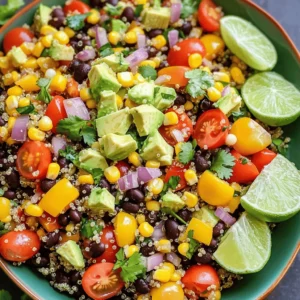
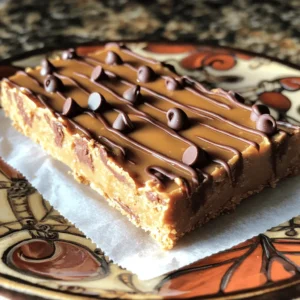
![For this dish, you need a few key items. Here’s what you’ll need: - 1 cup dried brown or green lentils, rinsed and drained - 1 tablespoon coconut oil - 1 medium onion, diced - 3 cloves garlic, minced - 1 tablespoon ginger, grated - 1 bell pepper (any color), chopped - 2 carrots, diced - 1 zucchini, diced - 1 can (14 oz) diced tomatoes - 1 can (14 oz) coconut milk - 2 cups vegetable broth These ingredients create a base full of flavor and nutrients. Lentils are rich in protein and fiber. The mix of vegetables adds color and texture. Spices bring the magic to this curry. You will want to use: - 2 tablespoons curry powder - 1 teaspoon cumin - 1 teaspoon turmeric - 1 teaspoon chili powder (adjust for heat) - Salt and pepper to taste These spices make your curry warm and inviting. They also help enhance the lentils' taste. Adjust the chili powder to fit your heat preference. To make your meal even better, consider these options: - Fresh cilantro for garnish - Cooked basmati rice for serving Serve the curry in deep bowls. Top with a drizzle of coconut milk and fresh cilantro. This adds a nice touch and brightens up the dish. You can also serve it with naan for a delightful combo. Start by gathering your ingredients. This helps keep your cooking smooth. First, heat the coconut oil in a large pot over medium heat. Once hot, add the diced onion. Sauté it for about 5 minutes until it turns soft and translucent. Next, stir in the minced garlic and grated ginger. Cook these for 2 minutes, and enjoy the great smell! Now, add the chopped bell pepper, diced carrots, and zucchini. Sauté these for 5 to 7 minutes. You want them to begin to soften. After that, mix in the curry powder, cumin, turmeric, and chili powder. Make sure the spices coat the veggies well. Let this cook for 1 minute to bring out the spice flavors. Then, add the rinsed lentils, diced tomatoes with their juices, coconut milk, and vegetable broth. Stir this mixture well. Bring it to a boil, then lower the heat and cover the pot. Let it simmer for 30 to 35 minutes. This helps the lentils cook and become tender. Stir it occasionally and add more broth or water if it looks too dry. Once cooked, season with salt and pepper to your taste. If you like a thicker curry, mash a few lentils with the back of a spoon. For the best flavor, always sauté the onion until soft. This builds a base of taste. When adding spices, let them cook briefly to release their full flavor. If you want more heat, add extra chili powder carefully. Keep an eye on the curry while it simmers. Stirring often prevents it from sticking to the pot. If you want a creamier curry, you can add more coconut milk. This enhances the richness. For a colorful dish, add some vibrant bell peppers or leafy greens near the end of cooking. Serve your curry hot. Garnish it with fresh cilantro for color and flavor. You can serve it over cooked rice for a complete meal. Drizzle a bit of extra coconut milk on top for a fun look. Enjoy your vibrant dish with naan or rice on the side. This vegan lentil curry is not just tasty, but it's also a feast for the eyes. For the complete recipe, check out the Full Recipe section. To cook lentils right, rinse them well. This removes dust and helps them taste fresh. Use a pot with water or broth. A good rule is three cups of liquid for every cup of lentils. Bring it to a boil, then lower the heat. Cover the pot and let them simmer. Brown or green lentils take 25 to 35 minutes to cook. Check for doneness by tasting a few. They should be tender but not mushy. Many people forget to rinse lentils before cooking. This can lead to a gritty texture. Another mistake is not checking the cooking time. Overcooked lentils turn mushy. Be careful not to add too much salt early. Salt can harden the lentils, making them tough. Always taste before adding more seasoning. Lastly, don’t skip stirring. It helps prevent sticking and ensures even cooking. To make your lentil curry pop, use fresh herbs like cilantro or parsley. They add brightness to the dish. Toast your spices before adding them. This brings out their natural oils and flavors. You can also add a splash of lemon juice at the end. It gives a nice zing. For a richer taste, try adding a spoonful of nut butter or tahini. These ingredients create a creamier texture. For the full recipe, check the [Full Recipe]. {{image_2}} You can change the veggies in your curry. Try spinach, peas, or sweet potatoes. Each adds a unique taste and texture. For a fun twist, use cauliflower or eggplant. Just chop them into small pieces. Add these veggies at the right time. Softer veggies should go in later to avoid mushiness. Want more heat? Add extra chili powder or fresh chili peppers. Start small and taste as you go. If it's too spicy, add more coconut milk or lentils. This helps balance the heat. You can also use milder spices like paprika for a different flavor without the heat. Lentils are great, but you can mix them with other proteins. Chickpeas or black beans work well. They add extra fiber and protein. Tofu is another option. Just cube it and cook with the veggies. For a nutty flavor, add some cashews or almonds. This gives your dish a nice crunch and flavor. For the full recipe, check out the details above. To keep your Vegan Lentil Curry fresh, place it in an airtight container. Make sure it cools down before sealing. Store it in the fridge for up to 5 days. This helps keep the flavors intact and the food safe to eat. When you’re ready to enjoy your leftovers, heat the curry on the stove. Pour it into a pot and add a splash of water or broth. This keeps it moist. Stir it often over medium heat until it’s hot. You can also use a microwave. Place the curry in a microwave-safe bowl and cover it. Heat it in short bursts, stirring in between, until it’s warm. If you want to store the curry for longer, freezing is a great option. Use a freezer-safe container or bag. Leave some space at the top for expansion. Label it with the date and type of dish. You can freeze it for up to 3 months. To thaw, place it in the fridge overnight. Then, reheat it as mentioned above. Enjoy your Vegan Lentil Curry any time you want! The best lentils for curry are brown or green. They hold their shape well and cook evenly. Red lentils can also work but tend to become mushy. I prefer brown lentils for their nutty taste and texture. They add a hearty feel to your curry. Yes, you can make Vegan Lentil Curry ahead of time. In fact, it tastes even better the next day! The flavors meld together as it sits. Just store it in an airtight container in the fridge. When ready to eat, heat it on the stove or in the microwave. To make a larger batch, simply double or triple the ingredients. Keep the same cooking times. Make sure your pot is big enough to hold all the lentils and veggies. If you add more spices, taste as you go. Adjust salt and heat levels to suit your taste. Yes, Vegan Lentil Curry is gluten-free. All the ingredients listed are naturally free of gluten. Always check labels for packaged items like broth. This ensures no hidden gluten is present. Enjoy this dish worry-free, knowing it fits a gluten-free diet! - 1 cup dried brown or green lentils, rinsed and drained - 1 tablespoon coconut oil - 1 medium onion, diced - 3 cloves garlic, minced - 1 tablespoon ginger, grated - 1 bell pepper (any color), chopped - 2 carrots, diced - 1 zucchini, diced - 1 can (14 oz) diced tomatoes - 1 can (14 oz) coconut milk - 2 tablespoons curry powder - 1 teaspoon cumin - 1 teaspoon turmeric - 1 teaspoon chili powder (adjust for heat) - Salt and pepper to taste - 2 cups vegetable broth - Fresh cilantro for garnish - Cooked basmati rice for serving (optional) 1. Begin by heating coconut oil in a large pot over medium heat. 2. Add the diced onion and cook for about 5 minutes. The onion should become soft and clear. 3. Next, add minced garlic and grated ginger. Cook for 2 more minutes until you smell the aroma. 4. Now, toss in the chopped bell pepper, diced carrots, and zucchini. Cook for 5-7 minutes until they soften. 5. Stir in curry powder, cumin, turmeric, and chili powder. Mix well for 1 minute. This boosts the spices' flavors. 6. Add the rinsed lentils, diced tomatoes with juices, coconut milk, and vegetable broth. Stir everything well. 7. Bring this mix to a boil, then reduce the heat to low. Cover and let it simmer for 30-35 minutes. 8. Check the lentils for tenderness. If needed, add more broth or water. Stir occasionally. 9. Once cooked, season with salt and pepper. For a thicker curry, mash a few lentils. 10. Serve hot, garnished with fresh cilantro. Enjoy over rice if you like. Lentils are small but mighty. They are rich in protein, making them a great meat alternative. They also offer fiber, which helps with digestion. Plus, lentils are low in fat and full of vitamins and minerals. You’ll find iron, folate, and magnesium in them. Eating lentils can support heart health and help keep your energy up. They are a great choice for all diets. Enjoy this dish for a healthy and tasty meal! In this blog post, I shared how to make vegan lentil curry. We covered main ingredients, spices, and tips for serving. You learned step-by-step instructions, cooking techniques, and common mistakes to avoid. I also discussed variations to suit your taste and how to store leftovers. Vegan lentil curry is simple and quick. You can enjoy its rich flavors while staying healthy. I hope you feel ready to try this dish and impress yourself with your cooking. Enjoy your meal!](https://cheftaling.com/wp-content/uploads/2025/06/572f9561-df55-4c43-8b79-8b41bf3dabf0-300x300.webp)
![To make this soup, you need a few fresh ingredients. Here’s what you will need: - 4 cups fresh broccoli florets - 1 cup diced potatoes - 1 small yellow onion, finely chopped - 2 cloves garlic, minced These ingredients form the base of your soup. The broccoli adds color and nutrition. Potatoes make it creamy and hearty. The onion and garlic add depth and flavor. Next, you will need some dairy and seasoning. Here’s the list: - 1 cup shredded sharp cheddar cheese - 1 cup whole milk - 2 tablespoons olive oil - 1 teaspoon salt - 1/2 teaspoon black pepper - 1/4 teaspoon nutmeg The sharp cheddar gives the soup its rich taste. Whole milk adds creaminess. Olive oil helps in cooking the onion and garlic. Salt and pepper enhance the flavors, while nutmeg adds a nice touch. Garnishes can make your soup look great. Here are some you can add: - Croutons - Additional herbs or spices Croutons add a nice crunch. You can also use herbs like parsley or thyme for a pop of color and flavor. This list of ingredients will help you create a warm, tasty bowl of Easy Broccoli Cheddar Soup. For the complete steps on how to prepare it, check the Full Recipe. 1. Sauté onions and garlic Heat olive oil in a large pot over medium heat. Add finely chopped onion. Cook for about five minutes until it turns translucent. Next, add minced garlic. Cook for one more minute until you smell that lovely aroma. 2. Add potatoes and broccoli Now, it’s time to add the diced potatoes and fresh broccoli florets. Pour in the vegetable broth, and sprinkle in salt and pepper. Bring this mix to a boil and watch it bubble. 1. Simmer and blend the soup Once boiling, reduce the heat. Cover the pot and let it simmer for about 15 to 20 minutes. You want the potatoes and broccoli to become tender. After that, take an immersion blender and carefully blend the soup. You can make it smooth or keep it a little chunky, depending on your taste. 2. Incorporate cheese and milk Now, it’s time to add the star ingredients: shredded sharp cheddar cheese and whole milk. Stir them in until the cheese melts. Make sure the soup is warm but don't let it boil again. Taste it and adjust the seasoning if needed. 1. Garnishing and presentation tips Serve your soup hot. For a nice touch, sprinkle croutons on top. They add a delightful crunch. You can also add a sprinkle of fresh herbs for color. 2. Ideal side dishes This soup pairs well with crusty bread or a simple side salad. Enjoy your meal with family or friends. You can find the Full Recipe if you need more details. To boost the taste of your Easy Broccoli Cheddar Soup, try adding spices. A pinch of cayenne pepper gives it a nice kick. You can also add garlic powder for more depth. For cheese, sharp cheddar melts well and makes the soup creamy. You can also mix in some Gruyère for a richer flavor. One common mistake is overcooking the vegetables. This can lead to mushy broccoli. Cook until just tender, about 15-20 minutes. Blending the soup to the right texture is also key. If you want a smooth soup, blend until there are no chunks. For a chunkier version, blend less but make sure to mix well. To make this soup fun for kids, hide extra veggies. You can sneak in some carrots or spinach. They blend well and add more nutrients. For a fun presentation, use quirky bowls or shapes. Try topping the soup with croutons shaped like animals. This makes the meal more exciting for young eaters. For the full recipe, check out the [Full Recipe]. {{image_2}} For a lighter version of broccoli cheddar soup, try using low-fat dairy. You can swap whole milk for skim or almond milk. This will cut calories but keep the soup creamy. You can also add more vegetables. Carrots, cauliflower, or spinach can boost the nutrition. Just chop them small and add them with the broccoli. If you need a gluten-free option, use a gluten-free broth. Most vegetable broths are safe. Check the label to be sure. For a vegan version, skip the cheese and milk. Use cashew cream instead. It adds creaminess without dairy. Nutritional yeast gives a cheesy flavor that many love. Want to play with flavors? Adding spices like paprika or cumin can change the taste. Fresh herbs like thyme or parsley can brighten the soup. For cheese lovers, try different cheeses. Gouda or mozzarella can give a unique twist. Mix them in to see what you like best. Check out the Full Recipe for detailed steps to create your own delicious version! To store your Easy Broccoli Cheddar Soup, let it cool first. Pour the soup into an airtight container. This keeps it fresh in the fridge. You can store it for about 3 to 4 days. When reheating, use a pot over medium heat. Stir often to avoid burning. To freeze your soup, cool it down completely. Use freezer-safe containers or bags. Leave some space at the top for expansion. Your soup can last up to 3 months in the freezer. When you're ready to eat, thaw it in the fridge overnight. Reheat it in a pot, stirring until hot. The soup lasts about 3 to 4 days in the fridge. If you freeze it, it can last for 3 months. Watch for signs of spoilage, such as a sour smell or mold. If you see either, it’s best to toss it. Always trust your senses; they guide you well. Yes, you can make this soup ahead of time. It stores well in the fridge for up to three days. To prepare the soup in advance, follow these best practices: - Cool the soup completely before storing it. - Store it in an airtight container. - Reheat the soup on low heat when ready to serve. Stir often to avoid scorching. Making the soup in advance saves time on busy days. It also allows the flavors to blend, making it even tastier! To achieve a creamier texture in your soup, try these tips: - Add more potatoes to thicken the base. Potatoes break down and create a nice, smooth texture. - Blend the soup longer for a silkier feel. Use an immersion blender for the best results. - Stir in a little cornstarch mixed with cold water. This will help thicken the soup without changing the taste. These tricks will help you get the perfect thickness for your Easy Broccoli Cheddar Soup! This soup pairs well with many side dishes. Here are some great options: - A simple green salad with lemon dressing adds freshness. - Grilled cheese sandwiches provide a classic pairing. The crunch complements the soup's creaminess. - Crispy breadsticks or warm bread are also a good choice. They are perfect for dipping. These sides will elevate your meal and make it even more enjoyable! You learned how to make easy broccoli cheddar soup using fresh ingredients and simple steps. We discussed essential flavors, cooking tips, and ways to customize the recipe for various diets. Remember, storing your soup properly keeps it fresh longer. With these tips, you can enjoy a warm bowl anytime. Experimenting with spices and cheese can make this dish even better. Dive in and create your perfect version!](https://cheftaling.com/wp-content/uploads/2025/06/9bd187f4-91b0-49da-90b1-4c35a5cb4d6b-300x300.webp)
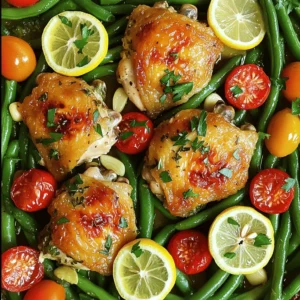

. To get great chicken, make sure it cooks evenly. Start by cutting the chicken thighs into similar sizes. This helps them cook at the same rate. Use a meat thermometer to check the middle of the chicken. It should be 75°C (165°F) when done. After cooking, let the chicken rest for a few minutes. This step is important! Resting allows the juices to settle. When you slice, the chicken stays juicy and tender. Want a bolder tzatziki? Add minced garlic for a stronger flavor. Garlic gives the sauce a nice kick. You can also try different herbs like mint or parsley. Each herb brings its own twist to the sauce. Experiment and find what you like best! If you're avoiding gluten, there are great options. Look for gluten-free pita bread at your local store. You can also use lettuce wraps for a fresh bite. Other bread options include flatbreads or even tortillas. The key is to find something that holds the filling well. For the full recipe, you can check out my detailed guide. {{image_2}} You can make a tasty vegetarian gyro by using grilled vegetables. Try zucchini, bell peppers, and eggplant. These veggies add great flavor and texture. You can also use popular plant-based options like falafel or marinated tofu. Both make a filling and delicious alternative to chicken. If you want to change the protein, beef, lamb, or turkey work well. Each option gives a different taste and texture to your gyro. Adjust cooking times based on the protein you choose. For beef or lamb, cook for about 5-6 minutes each side. Turkey cooks quicker, around 4-5 minutes per side. Always check the internal temperature to ensure it's cooked. You can spice things up by adding chili peppers or hot sauce. This gives your gyro a nice kick. Consider using different seasonings too, like smoked paprika or cumin. These spices can add depth and warmth to your dish. Experiment to find what you like best! To store leftover chicken gyros, place them in an airtight container. This keeps the chicken fresh and avoids odors. Refrigerate them right away. They stay good for about three days. Freezing tips for the gyro components: - For the chicken: Allow it to cool first. Place it in a freezer bag. Remove as much air as possible and seal it. - For the pitas: Wrap them tightly in plastic wrap and then in foil. This prevents freezer burn. - Avoid freezing tzatziki, as it may separate when thawed. To keep tzatziki sauce fresh, store it in a sealed container. Place it in the fridge right after making it. Tzatziki stays good for about four days. Shelf life of homemade tzatziki: Homemade tzatziki is best eaten within a few days. Check for any changes in smell or texture before using it. For reheating chicken gyros, use the oven or stovetop. This helps maintain flavor and texture. Preheat the oven to 175°C (350°F) and heat for about 10 minutes. Tips for rejuvenating stale pitas: - Lightly sprinkle water on the pitas. Wrap them in foil and heat in the oven for 5 minutes. - Alternatively, warm them in a dry skillet for about 30 seconds on each side. This brings back their softness. You can find the Full Recipe above to get all the tasty details! Chicken Gyro comes from Greece. The word "gyro" means "turn" in Greek. This dish has roots in the ancient Greek practice of cooking meat on a vertical spit. It became popular in the 1920s. Gyros often feature pork or lamb, but chicken is a tasty twist. Today, gyros are enjoyed worldwide. They represent Greek culture and cuisine. Yes, you can prepare many parts in advance. Marinate the chicken the night before. This saves time and enhances flavor. You can also make the tzatziki sauce early. Store it in the fridge until you are ready to serve. Warm the pita and cook the chicken just before serving. This keeps everything fresh and tasty. I love serving gyros with fresh side dishes. Here are some fun options: - Greek salad with cucumbers, tomatoes, and olives - Roasted vegetables, like zucchini and peppers - French fries or crispy potatoes - A refreshing drink, like iced tea or lemonade These sides balance the flavors of the gyro and make a complete meal. To add heat, you can mix spices into the marinade. Consider trying: - A pinch of cayenne pepper - Chili flakes for a kick - Hot sauce in the tzatziki You can also top the gyro with sliced jalapeños or a spicy salsa for extra flavor. You can find the Full Recipe for Chicken Gyro with Tzatziki, including all steps and tips. This guide will help you create a delicious meal at home. In this blog post, we explored how to make delicious chicken gyros. We discussed key ingredients like boneless chicken thighs, tzatziki sauce, and pita bread. I provided step-by-step instructions for marinating chicken, making tzatziki, cooking, and assembling your gyros. I also shared tips for variations, storage, and serving suggestions. In conclusion, making chicken gyros at home is fun and rewarding. You can customize flavors and enjoy the result fresh. Now, it's time to enjoy your culinary creation!](https://cheftaling.com/wp-content/uploads/2025/06/5898d7ad-a295-4653-abc7-4de2285aa341-300x300.webp)

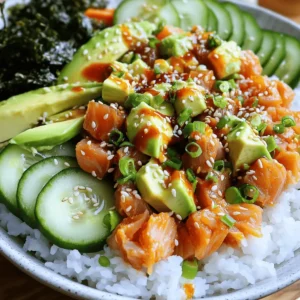
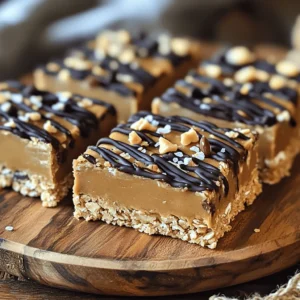
![- 1 ½ cups crushed graham crackers - ½ cup unsalted butter, melted - 1 cup cream cheese, softened - 1 cup powdered sugar - 1 teaspoon vanilla extract - 1 cup heavy cream - 1 cup mini Snickers bars, chopped - 1 cup Pink M&M's - ½ cup caramel sauce - ¼ cup chopped peanuts (for garnish) - Pink food coloring (optional) - 9-inch springform pan - Mixing bowls - Hand mixer or stand mixer - Whisk Gathering your ingredients is the first step to making the Pink M&M Snickers Cheesecake. You will need a mix of sweet, creamy, and crunchy items. The graham crackers form the crust, while the cream cheese and heavy cream create a rich filling. Don't forget the mini Snickers bars and Pink M&M's for that fun twist! Having the right equipment makes things easier. A springform pan helps you remove the cheesecake easily once it's set. Mixing bowls and a hand mixer are essential for creating that smooth, creamy texture. A whisk is useful, especially when whipping the cream. With these ingredients and tools, you’re ready to dive into the delicious world of cheesecake making! For the full recipe, check out [Full Recipe]. To start, combine 1 ½ cups of crushed graham crackers with ½ cup of melted butter. Mix until the crumbs look wet. Next, press this mixture evenly into the bottom of a 9-inch springform pan. Make sure it holds together well. After that, chill the crust in the refrigerator while you make the filling. In a large bowl, beat 1 cup of softened cream cheese with a hand mixer until smooth. Gradually add in 1 cup of powdered sugar and 1 teaspoon of vanilla extract. Keep mixing until it is creamy and smooth. In a separate bowl, whip 1 cup of heavy cream until stiff peaks form. Then, gently fold the whipped cream into the cream cheese mixture. If you want a pink hue, add a few drops of pink food coloring and mix until you reach the desired shade. Now, fold in 1 cup of chopped mini Snickers bars and 1 cup of Pink M&M's. Be careful not to break them apart. Pour the cheesecake mixture over the chilled crust and spread it out evenly. Drizzle ½ cup of caramel sauce on top, then swirl it with a knife for a fun marbled look. Cover the cheesecake with plastic wrap and refrigerate it for at least 4 hours. If you have time, overnight chilling gives the best results. Once set, remove the cheesecake from the springform pan. Finally, garnish with ¼ cup of chopped peanuts around the edge and add an extra drizzle of caramel sauce on top. Enjoy this sweet and colorful treat! To make a creamy cheesecake, start with room temperature cream cheese. Cold cream cheese makes it hard to blend. Mix it well until smooth before adding any sugar. This helps avoid lumps. Use a hand mixer for best results. Room temperature ingredients matter a lot. If your heavy cream, eggs, and cream cheese are too cold, your cheesecake may not set right. Let them sit out for 30 minutes before you start. This simple step makes a big difference in texture. Add more fun by drizzling extra caramel or chocolate on top. This gives a richer taste. You can also use a mix of candies. Try different flavors of M&M's or other chocolates. Each candy adds a new twist that makes your cheesecake special. You can even add a splash of your favorite liqueur for an adult version. Just remember, a little goes a long way! Garnish your cheesecake to make it pop. Use chopped peanuts around the edge for a crunchy bite. A few extra Pink M&M's on top adds color and fun. Serve it on a beautiful plate for a nice touch. You can also cut slices and place them on small dessert plates. This makes it easy for guests to enjoy. For a special treat, add a scoop of ice cream on the side. For the full recipe, check the earlier sections. Enjoy your Pink M&M Snickers cheesecake! {{image_2}} You can switch up the M&M's for other colors or flavors. For a fun twist, use peanut butter or almond M&M's. You can also try crispy or pretzel M&M's for a crunchy bite. If you want to change the chocolate bars, consider using Twix or Milky Way instead of Snickers. Each candy brings a new flavor and texture to your cheesecake. If you need a gluten-free option, use gluten-free graham crackers for the crust. You can also make the cheesecake dairy-free. Substitute cream cheese with a dairy-free option, like cashew cream or coconut cream. Use a dairy-free whipped topping to get that light, fluffy texture. These changes will still yield a delicious cheesecake without the common allergens. You can make this cheesecake fit any holiday theme. For Halloween, use orange and black M&M's. At Christmas, try red and green M&M's with peppermint pieces for a festive touch. In spring, add fresh fruit like strawberries or raspberries for a bright flavor. Each season offers unique ways to adapt this cheesecake. To keep your Pink M&M Snickers Cheesecake fresh, store it in the fridge. Use an airtight container or cover it tightly with plastic wrap. This will help keep it moist and tasty. If you have leftover toppings, store them separately. You can add them back on just before serving for the best look and taste. If you want to save some for later, you can freeze it. Cut the cheesecake into slices and wrap each slice in plastic wrap. Then place the slices in a freezer-safe bag or container. Make sure to label it with the date. This way, you can enjoy it later without losing flavor. In the refrigerator, the cheesecake lasts about 3 to 5 days. Keep an eye on it and check for any changes. If you notice any off smells, colors, or mold, it is best to throw it away. When frozen, your cheesecake can last up to 2 months. Just remember, the longer it stays in the freezer, the more it can lose its taste and texture. Before you eat it, thaw it in the fridge overnight. This makes it creamy again. Yes, you can make this cheesecake ahead of time. In fact, it tastes better after chilling. I recommend making it the day before you plan to serve it. Store the cheesecake in the fridge, covered with plastic wrap. This keeps it fresh and creamy. Absolutely! While the graham cracker crust is classic, you can try other options. Here are a few ideas: - Oreo cookie crust for a chocolatey twist - Vanilla wafer crust for a sweet crunch - Almond flour crust for a gluten-free option No worries! You can use different pans if you don’t have a springform. Here are some alternatives: - A regular pie pan works well for this cheesecake - An 8x8 square baking dish gives you nice slices - A round cake pan can also do the trick, just line it with parchment paper For the full recipe, check back to ensure you follow all steps. This cheesecake is easy to make and fun to customize. You learned about the key ingredients, tools, and step-by-step methods needed to create it. From adding your favorite candies to perfecting the texture, you have many options. Remember to store leftovers properly for the best taste later. Enjoy making this dessert for any occasion, and don’t hesitate to experiment with your unique twists. Your delicious creation awaits!](https://cheftaling.com/wp-content/uploads/2025/06/263eea83-ab65-4cca-a056-029dfeeff159-300x300.webp)
. Enjoy cooking! 1. Preheat the Oven: Start by preheating your oven to 425°F (220°C). This helps the chicken cook evenly and develop a crisp skin. Line a large sheet pan with parchment paper. This makes cleanup easy later. 2. Mix the Marinade Ingredients: In a bowl, whisk together 3 tablespoons of soy sauce, 2 tablespoons of honey, 1 tablespoon of sesame oil, 2 minced garlic cloves, and 1 teaspoon of ground ginger. Add a pinch of salt and pepper. This marinade gives the chicken a sweet and savory flavor. 3. Marinate the Chicken Thighs: Place 4 chicken thighs in a resealable bag or a shallow dish. Pour half of the marinade over the chicken. Seal the bag or cover the dish. Let the chicken marinate in the fridge for at least 30 minutes. You can marinate it for up to 2 hours for more flavor. 1. Arrange the Chicken and Vegetables on the Sheet Pan: After marinating, take the chicken out. Place it skin-side up in the center of the prepared sheet pan. Add 2 cups of fresh pineapple chunks, sliced red and yellow bell peppers, and sliced red onion around the chicken. This colorful mix makes your dish look great! 2. Drizzle Remaining Marinade Over the Mixture: Pour the rest of the marinade over the chicken and veggies. Ensure everything is nicely coated for a burst of flavor in every bite. 1. Baking Time and Temperature: Place the sheet pan in the preheated oven. Bake for 30-35 minutes. The chicken should reach an internal temperature of 165°F (74°C). The skin should be golden and crispy. 2. Checking Chicken Doneness: Use a meat thermometer to check the chicken. If it’s done, the juices should run clear. If not, give it a few more minutes. Enjoy this easy and tasty Hawaiian Chicken Sheet Pan recipe. For a full recipe, check out the details above! For great flavor, marinate your chicken for at least 30 minutes. If you have time, try to marinate for up to 2 hours. This allows the chicken to soak up all those tasty flavors. You can also adjust the marinade to fit your taste. Want it sweeter? Add more honey. Prefer a salty kick? Increase the soy sauce. To get crispy chicken skin, make sure to dry the skin with a paper towel before cooking. This helps it crisp up nicely. Place the chicken thighs skin-side up on the pan for the best results. To ensure even cooking, cut the vegetables into similar sizes. This way, everything cooks at the same pace. When serving, pair the Hawaiian Chicken with steamed rice or quinoa. This helps soak up the delicious juices. For a vibrant look, garnish the dish with sesame seeds and fresh cilantro. You can also serve it on a colorful plate for a fun presentation. Enjoy your meal straight from the pan for a casual feel! {{image_2}} You can make this dish your own by swapping proteins. Try chicken breast for a leaner option. Tofu works well for a vegetarian twist. Pork can also add a rich taste. Change up the veggies too! Use broccoli, snap peas, or even carrots. Mixing different vegetables can give you new flavors. Want to spice things up? Add red pepper flakes for heat. Chopped green onions can add freshness. You can also switch sauces. Try teriyaki for a sweet touch or sweet and sour for tangy flavor. These small changes can make a big difference in taste. If you need gluten-free options, use tamari instead of soy sauce. Honey can be swapped with agave for a low-sugar diet. Adjust the sweetness based on your needs. These easy swaps can help everyone enjoy this meal. You can make it fit your lifestyle while keeping the flavors intact. To keep your Hawaiian Chicken Sheet Pan fresh, follow these tips. First, let the dish cool down to room temperature. Store leftovers in an airtight container. This helps keep the flavors and moisture locked in. Use a container that fits your portion size to avoid wasting space. You can refrigerate the leftovers for up to three days. When reheating, I recommend using the oven for the best taste. Preheat your oven to 350°F (175°C). Place the chicken and veggies on a baking sheet. Cover them with foil to keep moisture in. Heat for about 15-20 minutes until warmed through. This method helps retain the flavors and keeps the chicken juicy. Avoid using the microwave, as it can dry out the chicken. If you want to freeze your dish, do so before reheating. Pack the chicken and vegetables in a freezer-safe container. Make sure to leave some space for expansion. This dish can be frozen for up to three months. When you're ready to enjoy it, move the container to the fridge for a day to thaw. For the best results, reheat in the oven after thawing. You should marinate the chicken for at least 30 minutes. This time allows the flavors to soak in. If you can, marinate it for up to 2 hours. The longer the chicken sits, the more taste it gains. Yes, you can use chicken breasts instead of thighs. They will cook faster, so keep an eye on them. Bone-in chicken adds flavor, but skinless options work too. Some great sides include steamed rice or quinoa. You could also serve it with a fresh salad. Grilled vegetables complement the dish nicely. Absolutely! This dish stores well in the fridge. You can prepare it ahead and enjoy it throughout the week. Just reheat it gently to keep the chicken juicy. Yes, you can prepare the chicken and marinate it a day ahead. Just cover it and keep it in the fridge. You can also cook it fully and store it for later meals. For the full recipe, check out the details above! This Hawaiian Chicken Sheet Pan recipe is simple and fun. You have learned about the key ingredients, easy steps for prep and cooking, and some helpful tips. With the right flavors and techniques, you can make a tasty meal that your family will love. Don't be afraid to try out variations to suit your taste. Enjoy creating this dish, and remember, sharing it makes it even better! Happy cooking!](https://cheftaling.com/wp-content/uploads/2025/06/1dd93791-b86c-4fa5-b8ca-4d00fc774a6f-300x300.webp)
![- 8 oz shrimp, peeled and deveined - 2 tablespoons olive oil - 1 teaspoon garlic powder - 1 teaspoon paprika - Salt and pepper to taste - 1 cup shredded sharp cheddar cheese - 1 cup shredded mozzarella cheese - 1/2 cup cream cheese, softened - 1/4 cup fresh basil, chopped - 4 slices of sourdough bread - 2 tablespoons butter - Skillet - Mixing bowl - Knife and cutting board You can swap cheeses for different tastes. Try gouda or pepper jack for a kick. If sourdough isn’t available, choose whole grain or ciabatta. Using different breads can change the flavor and texture. Just ensure they can hold the fillings. For the shrimp, you may use cooked shrimp or even crab. These swaps keep the dish exciting. This recipe is adaptable to your taste. For more details, check the [Full Recipe]. To start, I marinate the shrimp. I mix 2 tablespoons of olive oil, 1 teaspoon of garlic powder, 1 teaspoon of paprika, and salt and pepper in a bowl. This blend gives the shrimp a nice flavor. I let it sit for at least 15 minutes to soak in the spices. Next, I heat a skillet over medium heat. I cook the marinated shrimp for 3 to 4 minutes. I know they are done when they turn pink. Once cooked, I chop them into smaller pieces for the sandwich. Now, I focus on the cheese. I combine 1 cup of shredded sharp cheddar cheese, 1 cup of shredded mozzarella cheese, and 1/2 cup of softened cream cheese in a mixing bowl. I also add 1/4 cup of chopped fresh basil for a fresh taste. I mix everything well until it is smooth. This mixture needs a creamy texture that spreads easily. If it feels too thick, I can add a touch of milk to help. Assembling is the fun part! I take two slices of sourdough bread and spread a generous layer of the cheese mixture on each slice. Then, I add the chopped shrimp on top of that. Next, I put another layer of the cheese mixture over the shrimp. This helps to keep everything together. Finally, I place the other two slices of bread on top to complete the sandwich. For grilling, I melt 1 tablespoon of butter in the skillet over medium heat. I place the sandwiches in the skillet and cook until they are golden brown, about 3 to 4 minutes. I flip the sandwiches carefully, adding the remaining butter. I cook the other side until the cheese is melted and both sides are crispy. This method ensures the perfect crunch. Once done, I take them out and let them cool for a minute before cutting them in half. Enjoy your Shrimp Grilled Gourmet Cheese! Check the Full Recipe for more details. Cook your shrimp for 3 to 4 minutes. The shrimp should turn pink. This color change shows they are done. If you have shrimp that is opaque, they are ready to eat. You can enhance the flavor by adding more spices. Try a dash of cayenne for heat or lemon zest for freshness. Control the heat for the best crust. Start with medium heat to avoid burning. If your bread gets soggy, check your butter. Use just enough to coat the bread. You want a nice, crisp bite. Serve the sandwich with a side salad or chips. This adds crunch and freshness. For garnishing, sprinkle fresh basil or parsley on top. A drizzle of balsamic glaze can add a nice touch. Enjoy your shrimp grilled gourmet cheese with a bright drink. A glass of lemonade or iced tea pairs well! {{image_2}} You can switch up the protein in your Shrimp Grilled Gourmet Cheese. Try using crab or lobster. These seafood options add a sweet and rich flavor. They also bring a new texture to the sandwich. If you want to skip meat, mushrooms are a great choice. Portobello or shiitake mushrooms give a hearty feel. Just sauté them before adding to the sandwich. Adding spices or sauces can make your sandwich even better. A dash of hot sauce can bring heat. You can also try a squeeze of lemon juice for a fresh zing. If you like herbs, add some dill or chives for a new twist. Experiment with different cheese combinations too! Gouda or pepper jack can change the taste a lot. Mixing cheeses can lead to a unique flavor profile that you will love. Don’t feel limited to sourdough. There are many bread options! For gluten-free needs, look for gluten-free bread. There are great brands that taste just as good. You can even use untraditional bread types. Try ciabatta or focaccia for a rustic touch. These breads can add a crispy texture and a unique flavor to your sandwich. Each choice opens the door to new tastes and experiences. To keep your shrimp grilled gourmet cheese fresh, store it in the fridge. Wrap each sandwich in foil or place it in an airtight container. This helps avoid sogginess. You can keep it for up to three days. After that, the bread may lose its crunch and flavor. If you want to freeze your sandwiches, assemble them without grilling. Wrap each sandwich tightly in plastic wrap and then in foil. This prevents freezer burn. You can freeze them for up to a month. To reheat, remove the foil and plastic wrap. Place the sandwich on a baking sheet. Heat in a preheated oven at 350°F (175°C) for about 15-20 minutes. This way, the bread gets crispy again, and the cheese melts perfectly. For more tips, check out the Full Recipe. Cooking shrimp is quick and easy. For medium-sized shrimp, cook them for 3 to 4 minutes. They should turn pink and opaque. If you use larger shrimp, add a minute or two. Always check to avoid overcooking. Yes, you can use frozen shrimp. First, thaw them in cold water for about 15-20 minutes. After that, pat them dry with paper towels. This step helps to remove excess moisture. It ensures they cook evenly when you grill them. Pair this sandwich with light and fresh sides. A simple green salad works great. You might also enjoy crispy potato chips or sweet potato fries. For drinks, a chilled white wine or lemonade complements the dish well. Yes, you can prep this recipe ahead of time. Cook the shrimp and make the cheese mix in advance. Store them in separate airtight containers. You can keep them in the fridge for up to two days. When ready to eat, assemble and grill the sandwiches. This keeps everything fresh and tasty. For the full recipe, check out the earlier section. This shrimp grilled cheese is a fun twist on a classic. We covered ingredients, tools, and steps. Marinating shrimp and blending cheeses is key. Grilling tips help achieve that golden crust. We shared storage ideas to keep leftovers fresh. You can even swap proteins or customize flavors. Enjoy experimenting! This recipe might just become your new favorite. Happy cooking!](https://cheftaling.com/wp-content/uploads/2025/06/1a13c722-6110-44be-b706-17d86679c5b7-300x300.webp)
![To make Cheesy Stuffed Italian Bread, gather these ingredients: - 1 large Italian bread or French loaf - 1 cup shredded mozzarella cheese - 1 cup shredded provolone cheese - 1/2 cup grated Parmesan cheese - 1/2 cup ricotta cheese - 2 cloves garlic, minced - 2 tablespoons olive oil - 1 teaspoon Italian seasoning - 1/2 teaspoon red pepper flakes (optional) - Salt and pepper to taste - Fresh basil leaves, for garnish (optional) You can mix and match cheeses. If you want a sharper taste, use aged cheddar. For a creamier texture, swap in mascarpone for ricotta. If you don't have Italian seasoning, use oregano and thyme instead. You can leave out red pepper flakes if you prefer no heat. Choose fresh bread. It should feel soft but not squishy. Look for cheeses that are high quality. Fresh mozzarella should smell milky, and provolone should have a rich flavor. Select garlic that is firm and has no brown spots. These choices make a big difference in taste. For the best results, buy fresh herbs like basil. They add a bright flavor to your dish. For the full recipe, check out the detailed steps! 1. First, preheat your oven to 375°F (190°C). This is key for a crispy crust. 2. Take the large Italian bread and cut it in half lengthwise. You will have a top and a bottom. 3. Gently hollow out some of the insides. Leave enough crust to hold the filling. 4. In a bowl, combine the mozzarella, provolone, Parmesan, and ricotta cheeses. 5. Add the minced garlic, olive oil, Italian seasoning, and red pepper flakes if you want some heat. 6. Season this mixture with salt and pepper. Mix it well until all the ingredients blend together. 1. Spread the cheese mixture evenly into both hollowed-out halves of the bread. 2. Place the stuffed bread halves on a baking sheet. Cover them loosely with aluminum foil. 3. Bake in the oven for 15 minutes. This helps the cheese start to melt. 4. After 15 minutes, carefully remove the foil. Bake for an additional 10-15 minutes. Look for melted cheese and a golden-brown crust. 5. Once baked, take it out of the oven. Let it cool for a few minutes before slicing. 1. Garnish with fresh basil leaves for a pop of color and flavor. 2. Serve warm as a tasty appetizer or a side dish. 3. Pair with marinara sauce for dipping. It brings extra flavor to each bite. 4. Enjoy this cheesy delight with family and friends for any meal. For the full recipe details, check out the Cheesy Stuffed Italian Bread recipe. To get that gooey, stringy cheese melt, use a mix of cheeses. I love combining mozzarella, provolone, and ricotta. These cheeses melt well together. Shredding your cheese helps it melt faster. Make sure your oven is hot enough, around 375°F (190°C). Covering the bread with foil for part of the bake helps trap heat. This keeps the cheese nice and warm while the bread gets crisp. One common mistake is cutting the bread too deep. You want to hollow it out, but don’t cut through the crust. This lets the filling ooze out. Another mistake is not mixing the cheeses well. Make sure all cheeses blend together for even flavor. Not preheating the oven can also lead to uneven cooking. Always preheat your oven to get the best results. Finally, let the bread cool slightly before slicing. This helps keep the filling in place. To make your cheesy stuffed bread shine, add extra seasonings. I often use Italian seasoning, garlic, and a pinch of red pepper flakes. You can also try fresh herbs like basil or parsley. A sprinkle of salt and pepper can lift the flavors too. If you want a richer taste, drizzle a bit of olive oil before baking. These small tweaks make a big difference in flavor. For a twist, consider adding a splash of balsamic vinegar for a sweet tang. {{image_2}} You can change the cheese to fit your taste. Try using cheddar, gouda, or fontina. Each cheese brings a unique flavor. Mixing different cheeses adds depth. You can also use a sharp cheese for a bolder taste. Just remember, the meltability matters too. Cheese that melts well makes the dish creamy and delicious. Feel free to add your favorite fillings! You can use cooked sausage, pepperoni, or ham for a meaty touch. If you prefer veggies, try spinach, roasted peppers, or mushrooms. Sauté your veggies first to bring out their flavors. Mixing in herbs like parsley or thyme can also brighten the filling. These options help you create a dish that suits your family’s tastes. For a gluten-free version, use gluten-free bread. There are many good options at stores now. You can also make a low-carb version by using cauliflower bread or zucchini bread. These alternatives keep the flavors while lowering carbs. Just follow the same filling steps as the original recipe. You can still enjoy the cheesy goodness without the gluten or carbs! Explore the [Full Recipe] for more details on making your own cheesy stuffed Italian bread. To store your Cheesy Stuffed Italian Bread, first let it cool completely. Wrap the bread tightly in plastic wrap or aluminum foil. You can also place it in an airtight container. This helps keep the bread fresh. Store it in the fridge for up to three days. When it's time to enjoy your leftovers, preheat your oven to 350°F (175°C). Unwrap the bread and place it on a baking sheet. Heat it in the oven for about 10 to 15 minutes. This will make the bread warm and the cheese melt again. You can also use a microwave, but the oven gives a better texture. If you want to save some for later, freezing is easy. Wrap the stuffed bread tightly in plastic wrap, then place it in a freezer bag. Be sure to remove as much air as possible before sealing. You can freeze it for up to three months. When you're ready, thaw it in the fridge overnight before reheating. This keeps the flavors fresh and tasty. For full details on making this dish, check the Full Recipe. You can make Cheesy Stuffed Italian Bread ahead. Prepare the bread and filling. Then, stuff the bread and wrap it in foil. You can keep it in the fridge for up to 24 hours. When you are ready to bake, preheat the oven. Bake it as the recipe states. This lets the flavors meld and saves you time. Yes, you can use other types of bread. French bread works well, too. You can try sourdough or ciabatta for a twist. Just pick a bread with a sturdy crust. This helps keep the filling inside while baking. Each type of bread adds its own flavor and texture. Dipping sauces can enhance your Cheesy Stuffed Italian Bread. Marinara sauce is a classic choice. It adds a rich, tangy flavor. Garlic butter is another great option. You can also use ranch dressing for a creamy dip. Feel free to mix and match. Your guests will love the extra flavors. In this blog post, we explored how to make Cheesy Stuffed Italian Bread. We covered essential ingredients, tips for choice, and tasty alternatives. The step-by-step guide shared easy prep and baking steps. To enhance your dish, I provided tricks for the perfect melt and flavor boosts. Don't forget about storage, as it helps you enjoy leftovers. With these tools, you can make a delicious meal with ease. Enjoy creating your own cheesy masterpiece!](https://cheftaling.com/wp-content/uploads/2025/06/8914f565-7bab-498d-b67f-7e232d0c6a33-300x300.webp)


![- 2 large flour tortillas - 1 cup shredded sharp cheddar cheese - 1 cup shredded mozzarella cheese - 1/2 cup cream cheese, softened - 1/4 cup sour cream - 1/4 cup diced fresh jalapeños (optional) - 1/2 cup black beans - 1/2 cup cooked corn - 1 teaspoon garlic powder - 1 teaspoon onion powder - Salt and pepper to taste - Fresh cilantro for garnish (optional) For the best grilled cheese burrito, you need the right ingredients. Start with large flour tortillas. They hold the filling well. Next, choose your cheese. Sharp cheddar adds flavor, while mozzarella melts perfectly. Cream cheese makes the filling rich and creamy. You can add extra fillings to make it your own. Sour cream adds a tangy taste. Fresh jalapeños bring heat, but only use them if you like spice. Black beans add protein, and corn gives sweetness. Don’t forget spices! Garlic and onion powder enhance the flavor. Add salt and pepper to taste. If you want, fresh cilantro makes a great garnish. For a complete guide, check the Full Recipe. You’ll enjoy making this savory and crispy delight! In this step, we will make the cheese filling. Grab a large bowl. Add the shredded cheddar cheese, mozzarella cheese, cream cheese, and sour cream. If you like some heat, toss in the diced jalapeños. Next, add the black beans and corn. Sprinkle in the garlic powder, onion powder, salt, and pepper. Use a spoon to mix everything together until it is well combined. This filling is creamy and packed with flavor. Now, let's build your burritos. Lay one flour tortilla flat on a clean surface. Spoon half of the cheese filling into the center of the tortilla. Spread it out, but make sure to leave some space at the edges. Next, fold the sides of the tortilla over the filling. Then, roll it from the bottom up to secure everything inside. You want a tight roll to keep the filling from escaping. Repeat this process with the second tortilla and the remaining filling. It’s time to grill your burritos to get that perfect crispiness. Heat olive oil in a skillet over medium heat. Once the oil is hot, carefully place the burritos seam-side down in the skillet. Grill each side for about 3-4 minutes, or until they are golden brown. For even grilling, press them down gently with a spatula. This helps the outside get crispy while the inside stays melty and delicious. Enjoy the smell as they cook! To avoid soggy burritos, keep a few key points in mind. First, make sure not to overfill your burrito. A little space helps the heat circulate. Second, use a good amount of oil in your pan. This creates a nice, crispy crust. Lastly, keep the heat at medium. Too high, and the outside burns while the inside stays cold. You can switch up your cheese for more flavor. Here are a few tasty options: - Pepper jack for a spicy kick - Gouda for a rich, smoky taste - Monterey Jack for a creamy texture - Feta for a tangy twist These cheeses can add unique flavor notes to your grilled cheese burrito. Feel free to mix and match! Adding extras can make your burrito even better! Here are some ideas: - Fresh spinach or kale for a healthy crunch - Grilled chicken or beef for protein - Avocado slices for creaminess - Salsa or hot sauce for extra flavor These toppings can help you create a burrito that fits your taste. Get creative and enjoy the process! For the full recipe, check out the Best Grilled Cheese Burrito. {{image_2}} To make a spicy grilled cheese burrito, add jalapeños and hot sauce. Start by mixing diced jalapeños into the cheese filling. You can adjust the amount based on how spicy you like it. For an extra kick, drizzle hot sauce inside before rolling. This adds layers of flavor that will thrill your taste buds. If you prefer a vegan option, swap regular cheese for plant-based cheese. Look for brands that melt well, like cashew or almond-based cheese. You can also use silken tofu instead of cream cheese. Add some nutritional yeast for a cheesy flavor without dairy. This version keeps all the creamy goodness while being kind to your diet. For a breakfast twist, include eggs and breakfast meats. Scramble a few eggs and cook some bacon or sausage. Mix these with your cheese filling. This hearty option is perfect for a morning meal. It fills you up and gives you plenty of energy to start your day right. Feel free to explore these variations to make your best grilled cheese burrito even better! For the complete recipe, check out the Full Recipe section. To keep your grilled cheese burritos fresh in the fridge, wrap each burrito tightly in plastic wrap. This helps prevent moisture loss. Place the wrapped burritos in an airtight container to protect them from odors. Store them in the fridge for up to three days. When you're ready to eat, unwrap and reheat. To freeze your burritos for later use, start by allowing them to cool completely. Wrap each burrito in plastic wrap, then place them in a freezer-safe bag or container. This helps keep them fresh. You can freeze burritos for up to three months. When you crave a burrito, just take one out and let it thaw in the fridge overnight before reheating. To avoid losing texture when reheating, use a skillet or an oven. For a skillet, heat it over medium-low heat and cook the burrito for about 3-4 minutes on each side. This brings back the crispiness. If using an oven, preheat to 350°F (175°C) and bake for about 15-20 minutes. This method keeps the burrito warm and crispy. Enjoy your tasty creation from the [Full Recipe]! The best cheese for grilled cheese burritos is a mix of sharp cheddar and mozzarella. Cheddar adds a strong flavor, while mozzarella gives a gooey texture. You can also try pepper jack for some heat or gouda for a smoky touch. Mixing cheeses provides depth and enhances taste. Yes, you can make grilled cheese burritos ahead of time. Prepare the filling and assemble the burritos. Wrap them in plastic wrap and store in the fridge for up to two days. When ready to eat, just grill them until they are hot and crispy. This makes meal prep easy and quick. Grilled cheese burritos pair well with many sides. Consider serving them with salsa, guacamole, or sour cream for dipping. A simple side salad or some crispy tortilla chips can add crunch. You can also serve a bowl of soup for a warm, comforting meal. You can customize the recipe for dietary restrictions easily. For gluten-free options, use corn tortillas instead of flour. For dairy-free diets, try plant-based cheeses and yogurt alternatives. You can also skip the cream cheese and adjust spices for flavor. Be creative and enjoy your burrito! In this article, we explored the key ingredients for your grilled cheese burrito. You learned how to prepare the cheese filling, assemble, and grill burritos to perfection. We discussed tips for grilling and personalizing your meal with various fillings. We also covered popular variations and how to properly store your burritos. Creating your own grilled cheese burrito can be fun and tasty. It offers endless ways to mix flavors and ingredients based on your taste. Enjoy making your own delicious burritos today!](https://cheftaling.com/wp-content/uploads/2025/06/46bffce1-72dd-4fb8-bb4b-550005781f01-300x300.webp)


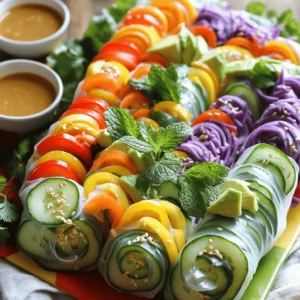
![To make the best chocolate chip banana bread, you need these key ingredients: - 3 ripe bananas, mashed - 1/2 cup unsalted butter, melted - 3/4 cup brown sugar, packed - 1 large egg, beaten - 1 teaspoon vanilla extract - 1 teaspoon baking soda - Pinch of salt - 1 1/2 cups all-purpose flour - 1/2 cup semi-sweet chocolate chips Ripe bananas are a must. They add sweetness and moisture. Use unsalted butter for better control over salt. Brown sugar gives a rich flavor. The egg binds everything together. Vanilla adds a lovely aroma. Baking soda helps the bread rise. The pinch of salt enhances all the flavors. All-purpose flour gives the right texture. Finally, chocolate chips make it fun and tasty. You can also add some fun extras if you want: - 1/4 cup chopped walnuts - 1/4 cup chopped pecans - 1/4 cup shredded coconut - 1/4 cup dried fruit Chopped walnuts or pecans give a nice crunch. Shredded coconut adds a tropical twist. Dried fruit can bring in a different sweetness. Feel free to mix and match these add-ins to suit your taste! If you need to convert measurements, here are some handy tips: - 1/2 cup = 4 tablespoons - 1 cup = 8 ounces - 1 teaspoon = 5 milliliters - 1 tablespoon = 15 milliliters These conversions make it easy to swap ingredients or scale up your recipe. You can also check the Full Recipe for more details on making this delicious treat! First, set your oven to 350°F (175°C). This is the perfect temperature for baking. Next, grab a 9x5-inch loaf pan. Grease it with a bit of butter or cooking spray. This step helps to prevent sticking. In a mixing bowl, mash three ripe bananas until smooth. Add in 1/2 cup of melted butter and mix well. Now, add 3/4 cup of brown sugar, one beaten egg, and 1 teaspoon of vanilla extract. Stir until everything blends together nicely. Sprinkle in 1 teaspoon of baking soda and a pinch of salt. Mix again until well combined. Next, gradually fold in 1 1/2 cups of all-purpose flour. Be gentle here! Overmixing can make the bread tough. Finally, gently stir in 1/2 cup of semi-sweet chocolate chips and 1/4 cup of chopped walnuts if you like. Pour the batter into your prepared loaf pan. Smooth the top with a spatula for even baking. Place the pan in your preheated oven. Bake for 60 to 65 minutes. To check if it’s done, insert a toothpick in the center. If it comes out clean, your banana bread is ready! Let it cool in the pan for about 10 minutes. Then, transfer it to a wire rack to cool completely. Enjoy the delicious smell wafting through your kitchen while it cools! To get that soft, moist texture, use ripe bananas. The more spots on the skin, the better! Use a fork to mash them well. This helps mix them into the batter easily. Be gentle when mixing in the flour. Overmixing can make your bread tough. You want it to be just combined for the best texture. One common mistake is using cold butter. Always melt your butter first. This helps it mix in better. Another mistake is skipping the salt. Even a pinch brings out the flavors. Also, don’t forget to grease your loaf pan. This keeps the bread from sticking. Lastly, resist the urge to peek in the oven too often. Opening the door can change the heat and make your bread sink. To check if your banana bread is ready, use a toothpick. Insert it into the center of the bread. If it comes out clean, it’s done. If you see batter, it needs more time. The edges should look golden brown. The top should spring back when you touch it lightly. Trust your senses; they guide you well! For the best results, follow the Full Recipe closely. {{image_2}} You can make this banana bread gluten-free easily. Use a gluten-free flour blend instead of all-purpose flour. Make sure the blend has a mix of flours, like rice flour and almond flour. This keeps the bread moist and tasty. Follow the same steps in the Full Recipe. It will bake just as well! To make this recipe vegan, swap the egg for a flax egg. Mix 1 tablespoon of ground flaxseed with 2.5 tablespoons of water. Let it sit for a few minutes until it thickens. Also, use plant-based butter or coconut oil instead of regular butter. This version is just as delicious and perfect for everyone. You can change up the flavors in your banana bread. Try adding spices like cinnamon or nutmeg for warmth. You can also mix in dried fruit, like raisins or cranberries, for a fruity twist. For a nutty flavor, add pecans or hazelnuts. These small changes can make your banana bread unique and fun! To keep leftover banana bread fresh, wrap it tightly in plastic wrap. You can also use aluminum foil. This helps prevent it from drying out. Store it at room temperature for up to three days. If you want to keep it longer, consider freezing it. Freezing banana bread is easy. First, slice the bread into pieces. Then, wrap each slice in plastic wrap. Place the slices in a freezer bag. Squeeze out as much air as you can before sealing. This helps stop freezer burn. To thaw, take out the slices you need. Let them sit at room temperature for about an hour. You can also use the microwave for a quick thaw. To keep your banana bread fresh, store it in a cool, dry place. Avoid direct sunlight. If you notice any mold, throw out the bread. For longer storage, freezing is the best option. For best taste and texture, consume it within a month. You can enjoy it warm or at room temperature. For a special treat, add a little butter or cream cheese on top. This banana bread is best served fresh, but it’s still tasty even after a few days. You can find the full recipe in the earlier sections. Yes, you can! Use a flaxseed meal or applesauce as a substitute. For one egg, mix one tablespoon of flaxseed meal with three tablespoons of water. Let it sit for five minutes until it thickens. For applesauce, use 1/4 cup to replace one egg. Both options work great and keep the bread moist. To ripen bananas fast, place them in a brown paper bag. Close the bag and leave it at room temperature. The bag traps ethylene gas, which helps bananas ripen faster. You can also bake them at 300°F (150°C) for about 15-20 minutes. This method softens them and brings out the sweetness. If you need a swap, use chopped nuts, dried fruit, or white chocolate chips. You can even try peanut butter chips for a fun twist. For a healthier option, try cacao nibs. They add a nice crunch and a dark chocolate flavor. Homemade banana bread stays fresh for about three to four days at room temperature. If you want it to last longer, wrap it tightly and store it in the fridge for up to a week. You can also freeze it for up to three months. Just slice it first for easy thawing. Serve your banana bread warm with a pat of butter or a scoop of ice cream. You can also top it with fresh fruit or a drizzle of honey. For a fun twist, try adding a sprinkle of cinnamon or a dollop of yogurt on the side. It’s delicious either way! For the [Full Recipe], check the main section. This blog covered how to make chocolate chip banana bread. We looked at key ingredients, optional add-ins, and how to measure them. Next, we went through step-by-step instructions for getting the perfect bake. I shared tips to avoid mistakes and ensure great texture. There were also fun variations for different diets and flavors. Lastly, I gave advice on storage and answers to common questions. Now, you have all you need to bake happily. Enjoy your delicious banana bread!](https://cheftaling.com/wp-content/uploads/2025/06/413b3ff6-f056-4d6c-bad0-d22ce7a262aa-300x300.webp)
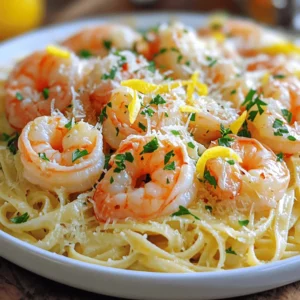
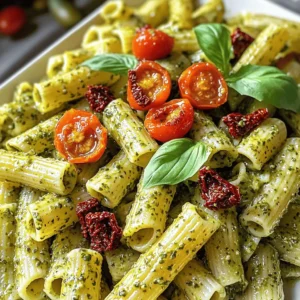

![To make the perfect smashing patty melts, you'll need these main ingredients: - 1 pound ground beef (80/20 blend) - 1 teaspoon garlic powder - 1 teaspoon onion powder - Salt and pepper to taste - 4 slices of Swiss cheese - 8 slices of sourdough bread - 2 tablespoons butter (softened) - 1 medium onion, thinly sliced - 1 tablespoon olive oil These ingredients create a juicy, flavorful patty that pairs well with the other elements in this dish. The signature sauce adds a tasty twist to your melts. Use these ingredients to whip up this sauce: - ½ cup mayonnaise - 2 tablespoons ketchup - 1 tablespoon dijon mustard - 1 tablespoon pickles, finely chopped - 1 tablespoon fresh dill, chopped (or 1 teaspoon dried dill) This sauce brings a creamy and tangy flavor that enhances each bite. For a complete meal, consider these sides and condiments: - Crispy French fries - Fresh salad with vinaigrette - Pickle spears - Extra signature sauce for dipping These options will round out your meal, making it even more enjoyable. For the full recipe, check out the detailed instructions. To start, grab a small bowl. Mix together the mayonnaise, ketchup, dijon mustard, finely chopped pickles, and dill. This sauce gives the patty melts a zesty kick. It’s easy, quick, and adds a lot of flavor. Set it aside so the flavors can blend nicely. Next, heat a skillet over medium heat. Pour in the olive oil and let it warm up. Add the thinly sliced onions. Cook them slowly for about 10 to 15 minutes. Stir them often until they turn golden brown and sweet. This caramelized onion adds a rich taste to your melts. Once done, take them off the heat and set them aside. Now, let's make the beef patties. In a large bowl, combine the ground beef, garlic powder, onion powder, salt, and pepper. Mix it all well. Divide the mixture into four equal parts and shape them into patties. Press a small indentation in the center of each patty. This helps them cook evenly. Heat the same skillet on medium-high. Add the patties and cook for 3 to 4 minutes on one side, till brown. Flip them over and place a slice of Swiss cheese on each one. Cook for another 3 to 4 minutes. The cheese should melt nicely, and the burgers should be cooked to how you like them. In another skillet, melt 1 tablespoon of butter over medium heat. Place two slices of sourdough bread in the skillet to toast lightly. Once they are golden, spread about one tablespoon of the signature sauce on each slice. This adds flavor to each bite. Now, it’s time to assemble the patty melts. On one slice of toasted bread, add a patty with melted cheese and a heap of caramelized onions. Place another slice of bread on top, sauce side down. Repeat the process for the second melt. Add the remaining tablespoon of butter to the skillet. Cook the assembled sandwiches for 2 to 3 minutes on each side. You want them golden brown and crispy. After that, slice the melts in half and serve them with extra signature sauce on the side for dipping. This meal is fun and tasty! Follow the [Full Recipe] for all the steps and enjoy your cooking! To make juicy patties, use a good beef blend. I suggest an 80/20 mix of ground beef. This means 80% meat and 20% fat. The fat keeps the meat moist while cooking. Don't overwork the meat when forming patties. Just mix in salt, pepper, garlic powder, and onion powder. Form four equal patties and make a small dent in the middle. This helps them cook evenly. Caramelizing onions takes time, but it’s worth it. Start with a medium heat and add olive oil. Sauté the onions for about 10-15 minutes. Stir them often to avoid burning. You want them to turn a nice golden brown. This brings out their sweetness and adds depth to your melt. While Swiss cheese is classic, feel free to switch things up. Cheddar or provolone can also work well. For bread, sourdough is great, but rye or whole wheat can add a nice twist. Choose what you enjoy most. You can even use gluten-free bread if needed. Each choice adds a unique flavor to your patty melt. For the full recipe, refer to the main section. Enjoy crafting your perfect patty melt! {{image_2}} You can easily swap out the beef for plant-based patties. Brands like Beyond Meat or Impossible Burger work great. Just cook them as you would with beef. They will still get that nice, crispy outside. Add the same spices, and you will keep the flavor. A veggie melt is tasty and satisfying. While Swiss cheese is classic, you can try other cheeses too. Cheddar gives a sharp kick. Monterey Jack melts well and adds creaminess. For a bold flavor, use blue cheese. Mix and match different cheeses for a unique taste. Don’t be afraid to experiment with flavors you love. You can jazz up your melts with extra toppings. Sautéed mushrooms add a rich, earthy taste. Fresh spinach provides a nice crunch and color. Avocado slices bring creaminess and healthy fats. You can also use jalapeños for some heat. Think about your favorite flavors and get creative! To keep your smashing patty melts fresh, store them right. First, let the melts cool to room temperature. Wrap each melt tightly in plastic wrap or aluminum foil. Place them in an airtight container. If you freeze them, they last up to three months. For the best taste, eat them within one month. Reheating is easy! For the best results, use your oven. Preheat the oven to 350°F (175°C). Place the melts on a baking sheet. Cover with foil to keep them moist. Bake for about 10-15 minutes until heated through. You can also use a skillet. Heat it on medium-low, add a little butter, and toast both sides until warm. Fresh ingredients make the best melts. Keep your ground beef in the coldest part of the fridge. Use it within two days for the best taste. Store onions in a cool, dark place. For the cheese, wrap it tightly in plastic. Keep the signature sauce in the fridge. Use it within a week for the best flavor. For the full recipe, check the recipe section above. The best way to cook patties for a melt is to use high heat. Start by forming your beef into four equal patties. Make a small dent in the middle of each patty. This helps them cook evenly. Heat a skillet over medium-high heat and add the patties. Cook for about 3-4 minutes on one side until brown. Flip them over, then add a slice of Swiss cheese on top. Cook for another 3-4 minutes until the cheese melts. This method gives you juicy, flavorful patties. Yes, you can use different sauces for your Patty Melts. While my signature sauce is tasty, feel free to mix it up. You could try barbecue sauce for a smoky flavor. Sriracha can add some heat if you like spice. You could even use a creamy ranch for a tangy twist. The choice of sauce can change the whole taste of your melt. Don't be afraid to experiment with your favorites! To make the patties ahead of time, simply prepare them and store them in the fridge. Season your ground beef with garlic powder, onion powder, salt, and pepper. Form your patties and place them on a tray. Cover them with plastic wrap and chill for up to 24 hours. If you want to store them longer, freeze them. Wrap each patty in plastic wrap and place them in a freezer bag. Thaw them in the fridge before cooking. This method saves you time on busy days. For the full recipe, check it out! Patty melts bring comfort and flavor to any meal. I covered the key ingredients, step-by-step cooking, and tips for tasty patties. You can enjoy different variations and store leftovers easily. Remember, fresh ingredients and proper cooking make all the difference. Whether a classic melt or a veggie option, your taste buds will thank you. Experiment with sauces and sides for even more fun. Enjoy making your patty melts!](https://cheftaling.com/wp-content/uploads/2025/06/687e68fb-6a33-4aa4-b97c-7385911c10a7-300x300.webp)

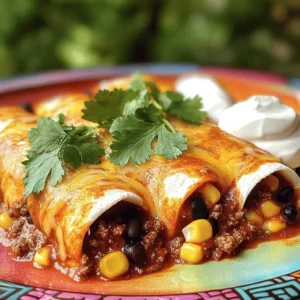
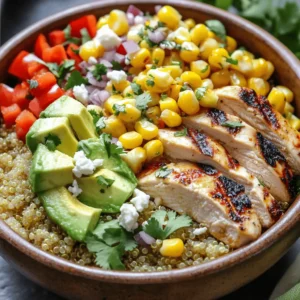
![To make these Strawberry Shortcake Cheesecake Rolls, you will need: - Fresh strawberries - Granulated sugar - Cream cheese - Powdered sugar - Vanilla extract - Flour tortillas - Whipped cream - Graham cracker crumbs - Melted butter - Fresh mint leaves What if you need to change some ingredients? Here are some great options: - Alternatives for cream cheese: You can use Greek yogurt or mascarpone for a lighter filling. - Gluten-free options for tortillas: Look for gluten-free tortillas made from rice or corn. - Vegan variations: Use a vegan cream cheese made from nuts or tofu. For whipped cream, choose coconut cream or a plant-based alternative. These swaps will help you enjoy this treat no matter your dietary needs. Preparing the strawberries Start by hulling and slicing 1 cup of fresh strawberries. Place the sliced strawberries in a small bowl. Add 2 tablespoons of granulated sugar and mix well. Let them sit for about 10 minutes. This helps draw out their juices and makes them sweet. Making the cheesecake filling In a clean bowl, combine 1 package of softened cream cheese with 1/2 cup of powdered sugar. Add 1 teaspoon of vanilla extract for flavor. Beat the mixture until it is smooth and creamy. This will be your cheesecake filling. Spreading the filling on tortillas Take 4 large flour tortillas and lay one on a clean surface. Spread a generous layer of the cheesecake filling over the tortilla. Be sure to leave a small border around the edges for easy rolling. Adding strawberries and whipped cream Spoon some of the sugared strawberries over the cream cheese layer. Then, add a dollop of 1 cup of whipped cream on top. This adds a light, fluffy texture to your rolls. Rolling technique Starting at one edge, carefully roll the tortilla tightly. Make sure the filling stays inside as you roll. Continue until the entire tortilla is wrapped. Repeat this with each tortilla until all are rolled. Coating the rolls with graham cracker crumbs In a small bowl, mix 1 cup of graham cracker crumbs with 2 tablespoons of melted butter. Roll each completed roll in the graham cracker crumb mixture. This will give your rolls a lovely crust. Chilling the rolls Place the rolls in the refrigerator for at least 30 minutes. This helps them firm up and makes slicing easier. When you’re ready to serve, slice each roll into bite-sized pieces and enjoy your Strawberry Shortcake Cheesecake Rolls! For the complete recipe, check out the [Full Recipe]. To make a smooth cheesecake filling, start with softened cream cheese. This helps mix in the powdered sugar easily. Beat the cream cheese until it is creamy and free of lumps. If you want an extra touch, add a splash of lemon juice for a bright flavor. When rolling tortillas, use large flour tortillas. They hold more filling and roll better. Lay the tortilla flat and spread your cheesecake filling evenly. Leave a small space at the edges to help seal the roll. Start rolling from one end and keep it tight. This ensures the filling stays inside. To avoid soggy tortillas, do not over-soak them with filling. Use just enough to cover but not drown. If you find your tortillas getting too soft, try warming them slightly before using. This makes them more pliable. Prevent filling from oozing out by rolling tightly. If you leave too much space, the filling may escape. Ensure you seal the ends well by pressing them down gently. For creative serving, slice the rolls into bite-sized pieces. Arrange them on a colorful plate for a fun look. Drizzle some strawberry syrup on top for extra sweetness and appeal. Garnish with fresh mint leaves for a pop of color. You can also add extra strawberries for a vibrant touch. Using small dessert forks adds an elegant feel to your dessert table. For the full experience, check out the Full Recipe. {{image_2}} You can change the flavor of your Strawberry Shortcake Cheesecake Rolls easily. Adding chocolate or caramel gives a sweet twist. Simply drizzle melted chocolate or caramel on top before serving. You can also mix in chocolate chips into the filling for a rich taste. Another fun option is to use other fruits, like blueberries. Blueberries add a nice tartness. Just replace some strawberries with blueberries for a fresh burst of flavor. If you want a healthier option, try low-sugar modifications. Use a sugar substitute in the filling. You can also reduce the amount of sugar in the strawberries. For those who cannot eat dairy, there are dairy-free options. Use vegan cream cheese and coconut whipped cream. This makes the rolls creamy and delicious without the dairy. Seasonal changes call for fun twists. In summer, use mixed berries for a colorful treat. You can add raspberries or blackberries to the filling. For holidays, think about festive flavors. During winter, add some cinnamon or nutmeg to the filling. You can even top the rolls with crushed peppermint for a holiday flair. Each season brings a chance to try something new! For the complete recipe, check out the Full Recipe. To keep your Strawberry Shortcake Cheesecake Rolls tasty and fresh, refrigeration works best. Place them in an airtight container. This prevents them from drying out or absorbing other smells in the fridge. Ensure they are wrapped well if you don’t have a container. If you want to enjoy them later, you can freeze the rolls. Wrap each roll tightly in plastic wrap. Then, place them in a freezer bag. This keeps them safe from freezer burn. You can store these rolls in the fridge for about three days. If kept frozen, they can last for up to three months. Always check for signs of spoilage. If the rolls smell sour or look discolored, it’s best to throw them away. Freshness matters when it comes to enjoying these treats! You can prepare these rolls a day before serving. Make the rolls, but don't coat them yet. Wrap them in plastic wrap and store them in the fridge. When you’re ready to serve, roll them in the graham cracker crumbs. This keeps them fresh and tasty. Yes, you can use frozen strawberries. Just thaw and drain them first. This prevents excess moisture in the rolls. Frozen strawberries may not be as firm, but they still taste great! Serve the rolls chilled for the best taste. Slice them into bite-sized pieces. Arrange them on a nice plate and garnish with extra strawberries and mint. This makes for a pretty presentation. To make more rolls, simply double or triple the ingredients. Use more tortillas and increase the filling and toppings. This way, everyone gets a tasty treat! If you need a substitute for whipped cream, consider using Greek yogurt. It adds creaminess and tang. You can also use coconut cream for a dairy-free option. Both will work well in the rolls. For the full recipe, check out the complete details. You now have all the tools to make delicious Strawberry Shortcake Cheesecake Rolls. We covered every ingredient needed, plus helpful substitutes and variations. You learned easy steps to prepare and assemble the rolls. I also shared tips to avoid common mistakes and enhance your presentation. These rolls are fun to make and perfect for any occasion. Get creative with flavors and toppings. You can even make them ahead of time. Enjoy sharing this treat with friends and family! Happy rolling!](https://cheftaling.com/wp-content/uploads/2025/06/a6f98c9b-955b-4689-ad35-ad6abef3ebf0-300x300.webp)
